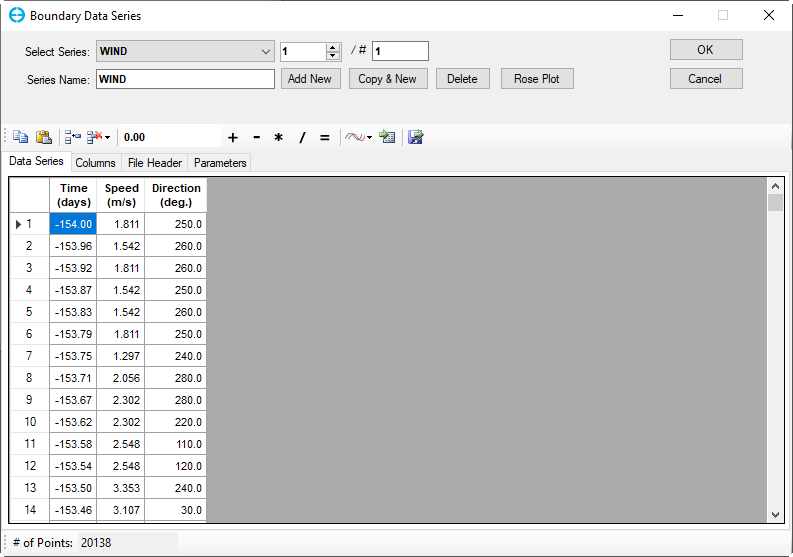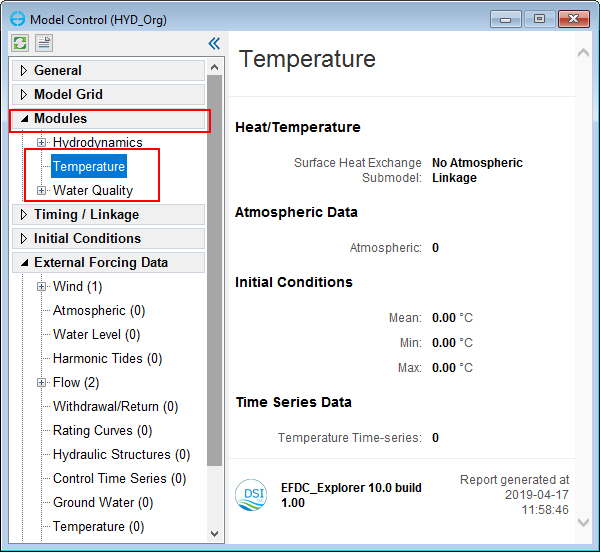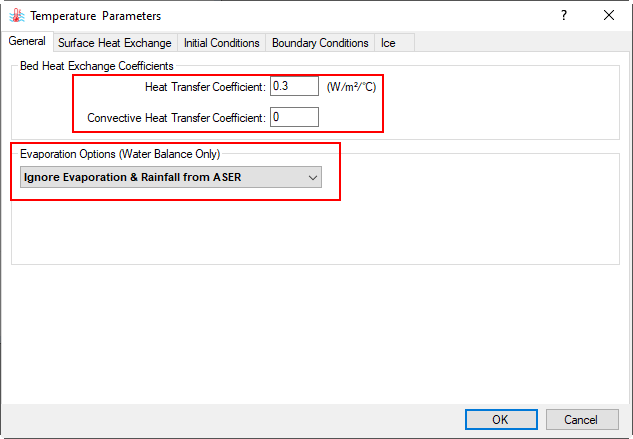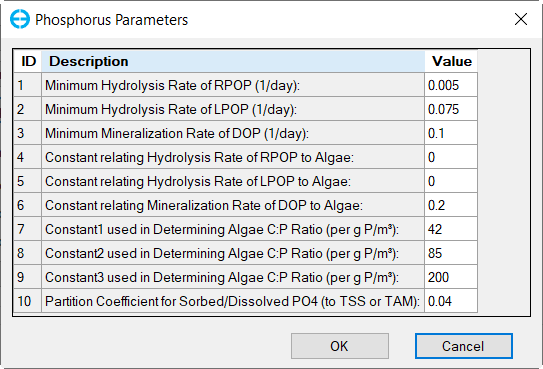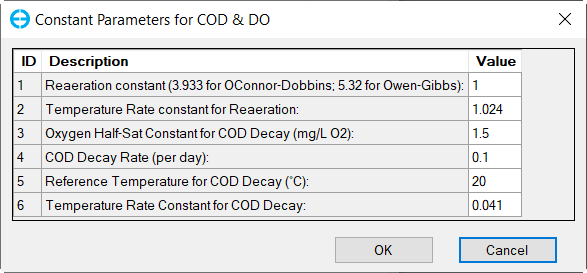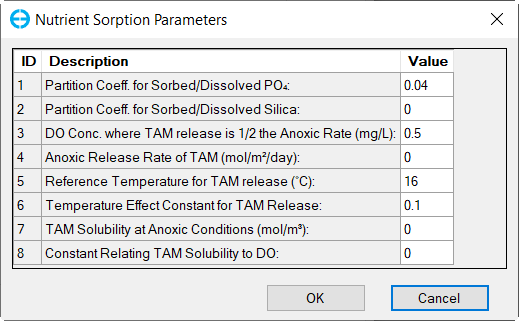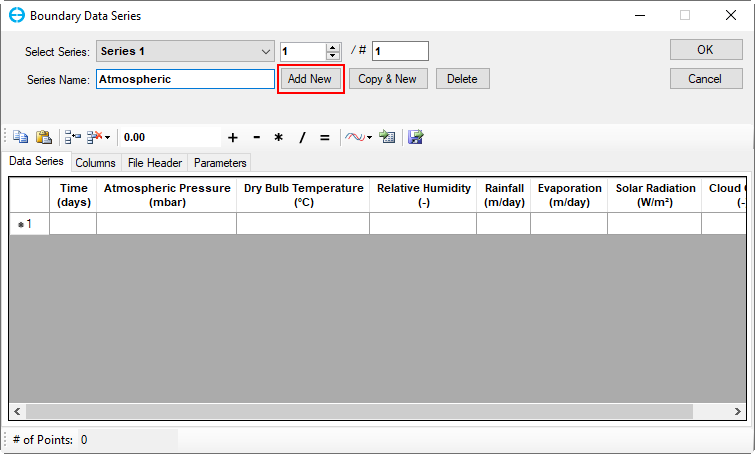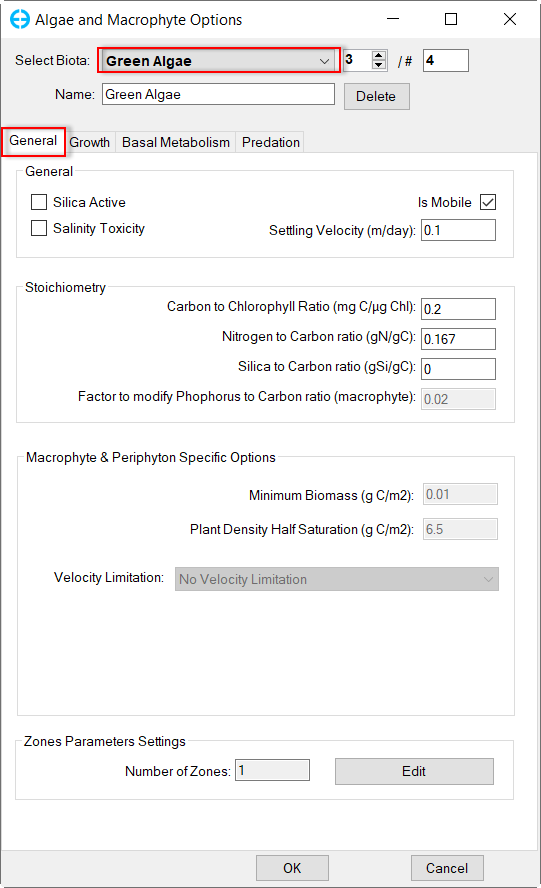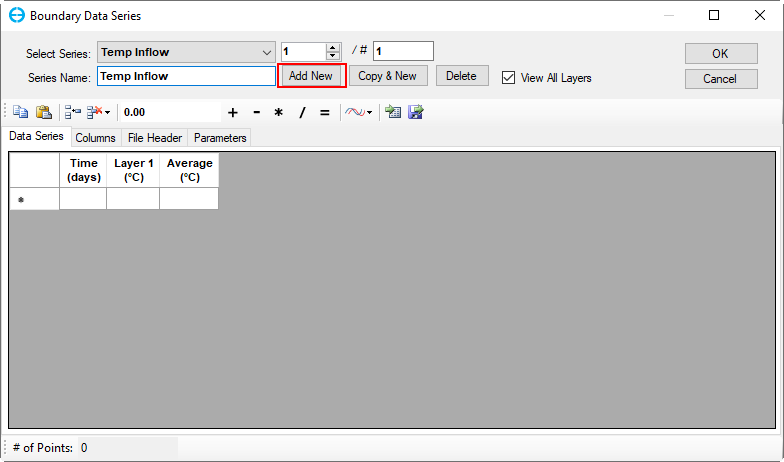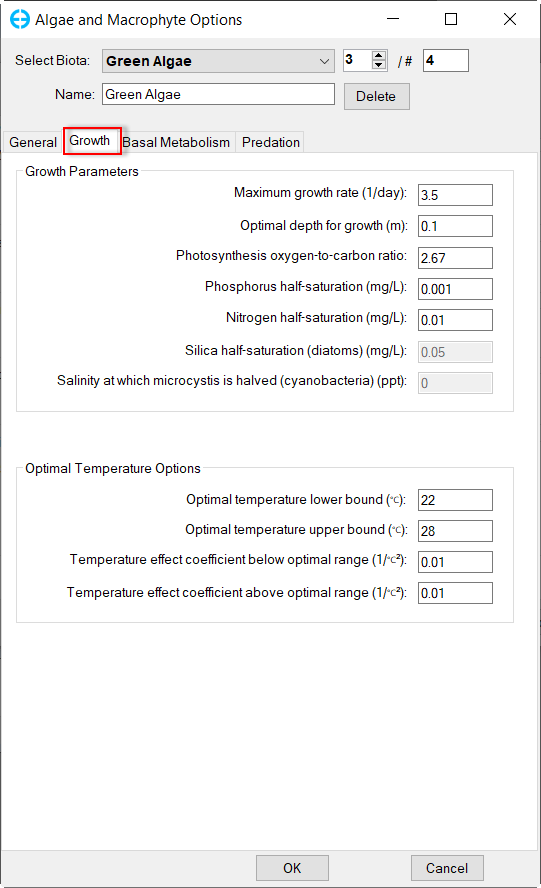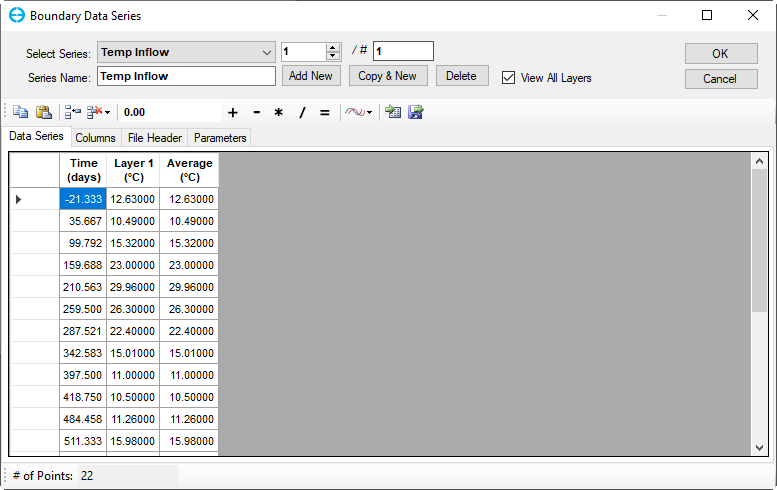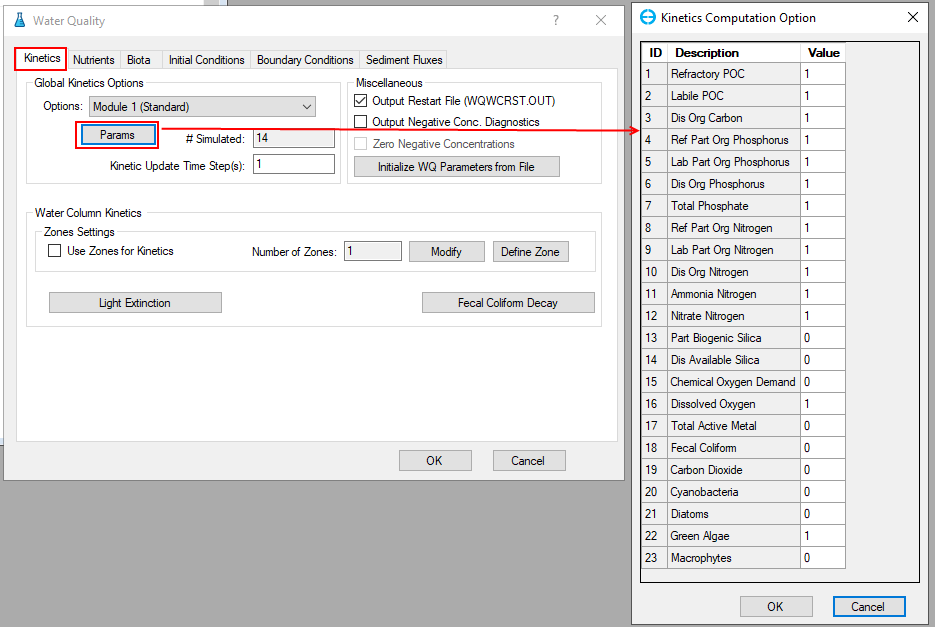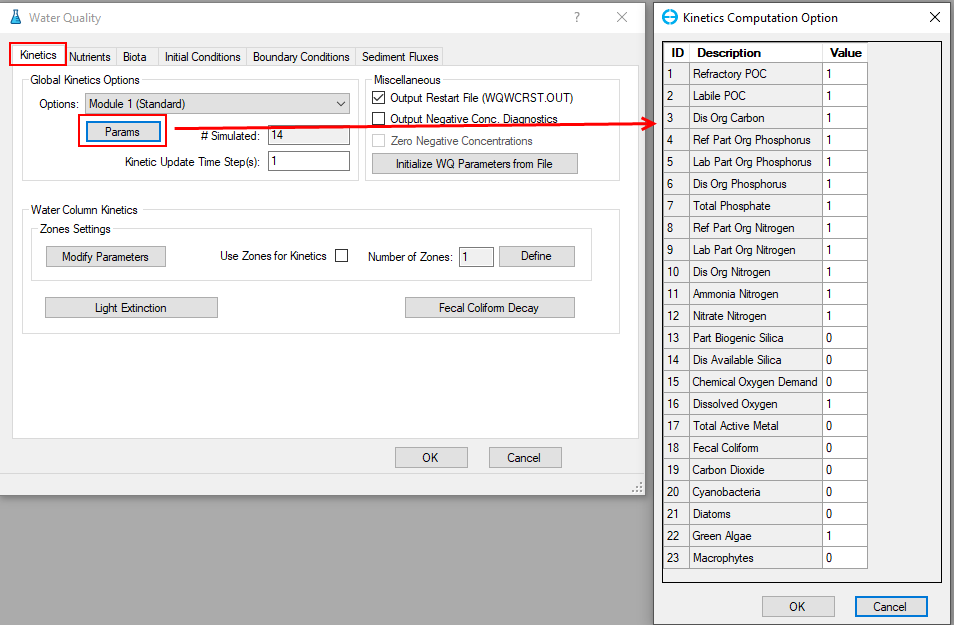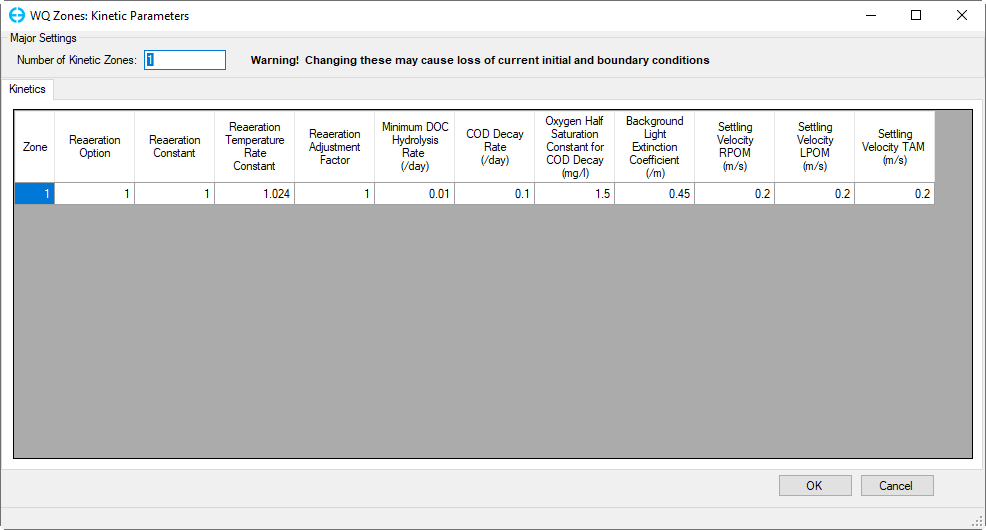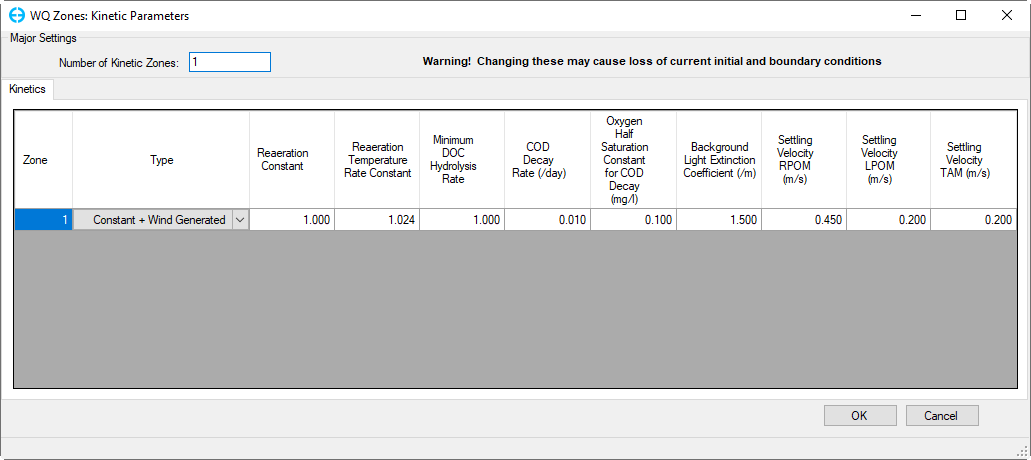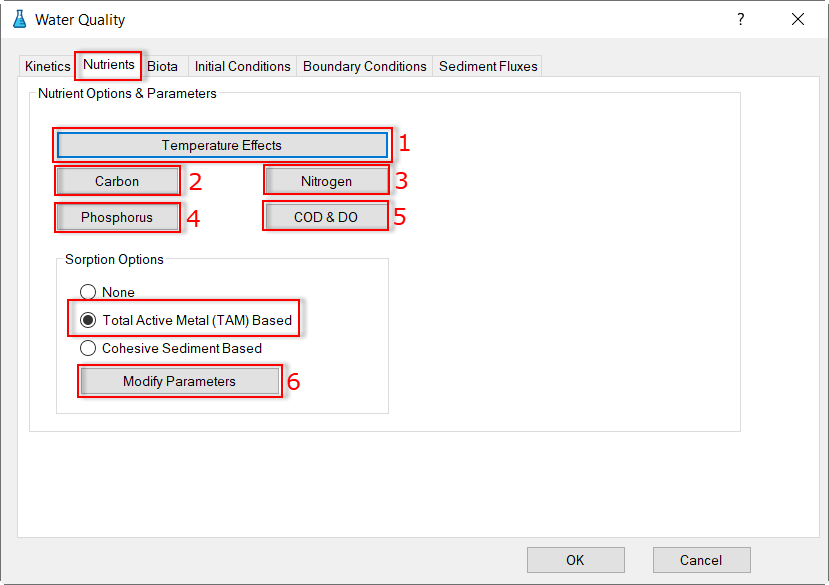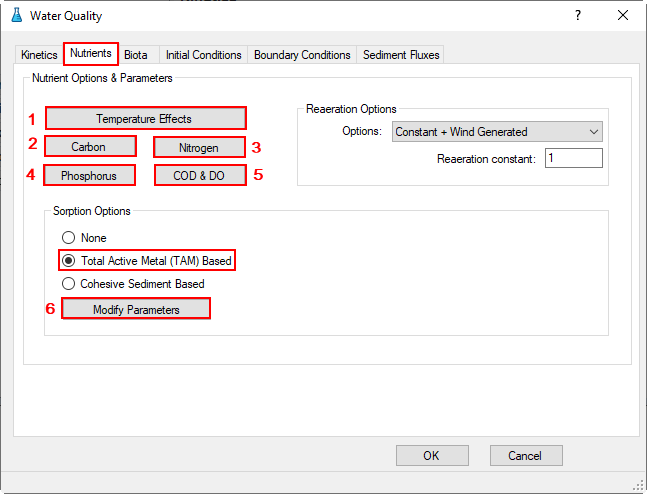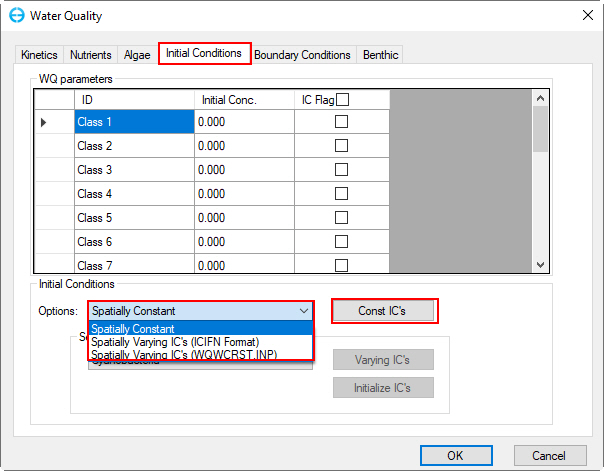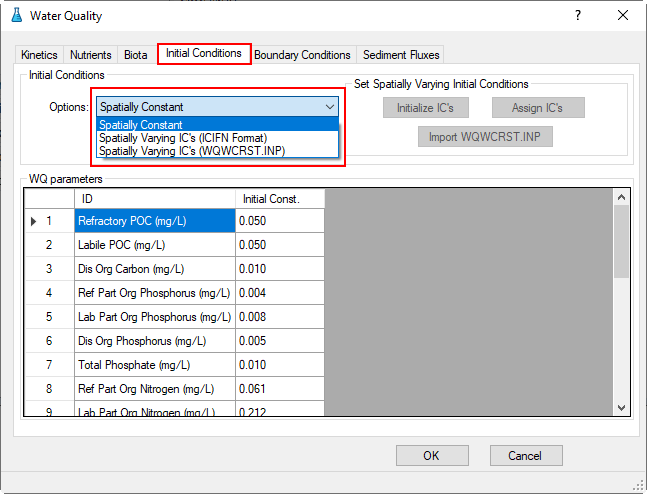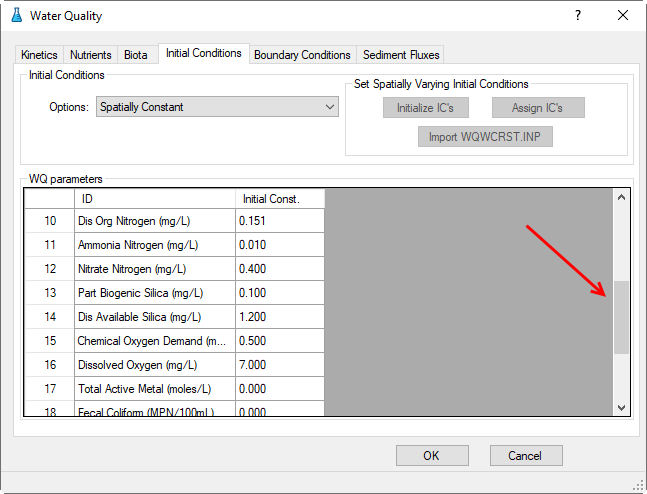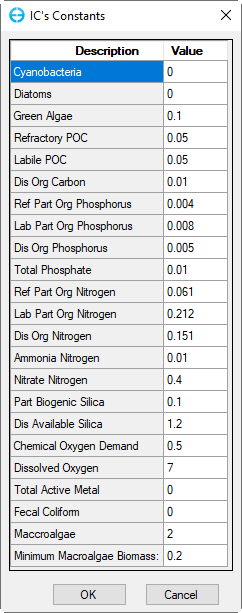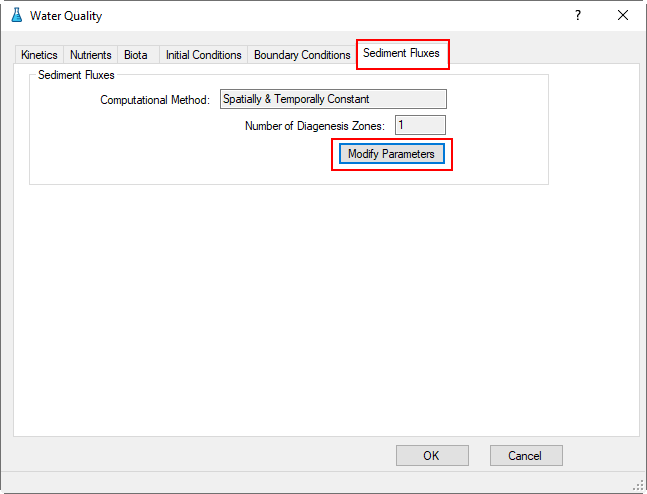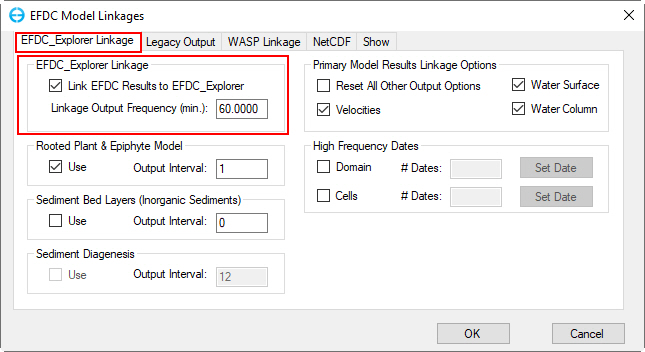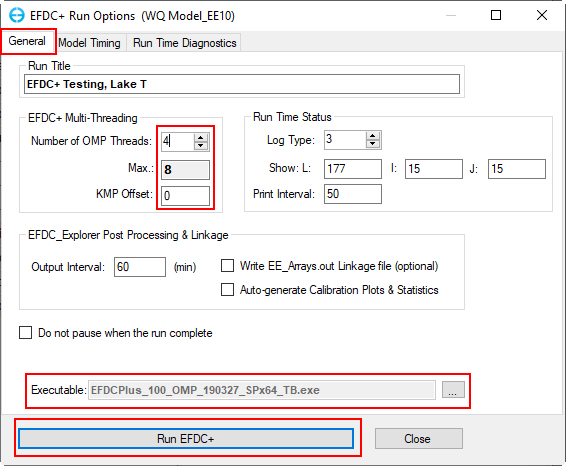...
Lake Thonotosassa is the largest natural freshwater lake in Hillsborough County covering an area of 849 acres (3.44 km2) (Hillsborough County Water Atlas). The lake is fed by Baker Creek at the southeastern end of the lake and water flows out through Flint Creek on the northeastern end to the Hillsborough River (3407874Figure 1). This guidance document carries on from the hydrodynamic model introduced in Build a 2D Lake Model (Level 1 Step-by-Step Guidance). The model files are contained in the Demonstration Models of the Resources page folder file (1.14 Lake T Hydrodynamic and WQ Model).
...
The hydrodynamic model is used as the basis for building a water quality model that is part of this guidance document. 3407874 Figure 2 provides a representation of the digital terrain model for Lake Thonotosassa. All of the boundary types for the Lake Thonotosassa model are flow boundaries, the locations of flow boundary conditions are presented in 3407874 Figure 3. Flow discharge and temperature used for the model are shown in 3407874 Figure 4. 3407874 Figure 5 shows a wind rose of the wind data.
...
Open the hydrodynamic model then add wind data in the model as shown in 3407874 Figure 6.
From Model Control form, select External Forcing Data menu item, RMC on Wind sub-option and select Add a Data Series to add wind data series.
...
Update the Series Name for associated time series. In this case, the title “Winds” for current series 1.
Copy and paste time series data, “Winds.dat,” into the workspace corresponding to the winds as shown in 3407874 Figure 7 then click the OK button.
| Anchor | ||||
|---|---|---|---|---|
|
Figure 7. Wind Boundary Data Series form.
...
From the Model Control form, RMC on Modules the tree - menu and check Temperature and Water Quality modules then click OK to activate these modules as shown in 3407874 Figure 8.
| Anchor | ||||
|---|---|---|---|---|
|
Figure 8 Activate Temperature and Water Quality (1).
After activating Temperature and Water Quality modules, these modules will appear in on the left side of the Model Control form, under Modules tree for setting as shown in 3407874in Figure 9.
| Anchor | ||||
|---|---|---|---|---|
|
Figure 9 Activate Temperature and Water Quality (2).
...
1. From Model Control form, RMC on Temperature sub-item, under Modules. Here the user can select (1) Setting to go to Temperature Parameters form to set temperature parameters, (2) Initial Condition to assign temperature IC (3407874Figure 10).
| Anchor | ||||
|---|---|---|---|---|
|
...
2. From Model Control form, RMC on Temperature under Modules, select Settings to open Temperature Parameters form as shown in 3407874 Figure 11.
| Anchor | ||||
|---|---|---|---|---|
|
Figure 11. Temperature Parameters form.
...
2.1. In the General tab, under Bed Heat Exchange Coefficients frame, set Heat Transfer Coefficient value to 0.3 as shown in 3407874.
...
...
, Convective Heat Transfer Coefficient value to 0, as shown Figure 12. The evaporation options can be selected from the drop-down menu,
| Anchor | ||||
|---|---|---|---|---|
|
Figure 12. Temperature Parameters - General setting.
...
2.2. Move to the Surface Heat Exchange tab, the drop-down list provides several options, including No Atmospheric Linkage, Full Heat Balance, External Equilibrium Temperature, Constant Equilibrium Temperature, Equilibrium temperature (CE-QUAL-W2 method) and Full Heat Balance with Variable Extinction Coeff. Select Equilibrium Temp (CE-QUAL-W2 method) and set parameters as shown in 3407874 Figure 13.
| Anchor | ||||
|---|---|---|---|---|
|
...
2.3. Move to the Initial Conditions tab (shown in Figure 14), set parameters for Bed Temperatures Initial Conditions, then click Assign button in the Initial Conditions for Water Temperature frame to open Apply Cell Properties via Polygons: Temp form to assign temperature IC as shown in 3407874. Select Use Constant from the Set Initial Conditions and set Operator = 10.5. In the Layer Options frame select Set for All the layers to assign the same value to all layers or select For A Specific Layer to set for each layer, then click on Apply button to assign temperature IC and OK to close the form and return it to the parent form (3407874Figure 15).
Anchor Figure 14 Figure 14
Figure 14. Temperature Parameters - Initial Conditions setting.
...
2.4. Move to the Boundary Conditions tab. Here the user can create the number of atmospheric and temperature data series as shown in 3407874 Figure 16. In the Atmospheric Data frame, click on
Anchor Figure 16 Figure 16
Figure 16. Temperature Parameters - Boundary Conditions setting.
In the Atmospheric Data frame, click on the Edit button then the Boundary Data Series form appears to assign atmospheric data series (3407874Figure 17). Click Add New button to add a new time series then put a name as "Atmospheric" for the Series Name then press Enter key as shown in 3407874.
Copy and paste time series from “Atmospheric.dat” file from the Data folder, then click OK (3407874)
...
...
in Figure 17.
Anchor Figure 17 Figure 17
Figure 17. Boundary Condition Settings: Temperature Data Series (1).
Copy and paste time series from “Atmospheric.dat” file from the Data folder, then click OK (Figure 18)
Anchor Figure 18 Figure 18
Figure 18. Boundary Condition Settings: Atmospheric Data Series (2).
...
In the Temperature Data frame (3407874Figure 16), click on Edit button then the Boundary Data Series form appears to assign Temperature data series (3407874Figure 19). Click Add New button to add a new time series then put a name as "Temp Inflow" for the Series Name then press Enter key as shown in 3407874 Figure 19.
Copy and paste time series from “Temperature.dat” file from the Data folder, then click OK (3407874Figure 20)
Anchor Figure 19 Figure 19
Figure 19. Boundary Condition Settings: Temperature Data Series (1).
Anchor Figure 20 Figure 20
Figure 20. Boundary Condition Settings: Temperature Data Series (2).
...
From the Model Control form, RMC on Water Quality sub-menu under Modules, select Setting to open Water Quality form as shown in 3407874 Figure 21.
Anchor Figure 21 Figure 21
...
1. Proceed to the Kinetics tab, select Module 1 (Standard) from the Global Kinetic Options frame drop down dropdown, then click on Params button to display the list of simulated parameters; type 1 for simulated parameter and 0 for not simulated, then click OK as shown in 3407874 Figure 22.
Anchor Figure 22 Figure 22
Figure 22. Kinetics Computation Options.
2. Click the Modify Modify Parameter button in Water Column Kinetics frame for Use Zones for Kinetics to edit Kinetic Parameters for the current zone as shown in 3407874 Figure 23.
Anchor Figure 23 Figure 23
Figure 23. Kinetics Parameters by zone.
...
3. Click the Fecal Coliform Decay button in the frame Water Column Kinetics to edit Parameter for the current zone as shown in 3407874 Figure 24.
Anchor Figure 24 Figure 24
...
4. Click the Light Extinction button in the frame Water Column Kinetics to edit light extinction options as shown in 3407874 Figure 25.
Anchor Figure 25 Figure 25
...
Proceed to the Nutrients tab as shown in 3407874 Figure 26.
In the Nutrient Options & Parameters frame: (1) click Temperature Effects button to edit temperature effects as shown in 3407874 Figure 27; (2) click Carbon button to edit the Carbon parameters as shown in 3407874 Figure 28; (3) Nitrogen button to edit the Nitrogen parameters as shown in 3407874in Figure 29; (4) Phosphorus button to edit the Phosphorus parameters as shown in 3407874 Figure 30; (5) COD&DO button to edit the COD&DO parameters as shown in 3407874 Figure 31.
In the Sorption Options frame: Select Total Active Metal (TAM) Based option and (6) click Modify Parameters buttons to edit Nutrient Sorption Parameters as shown in 3407874 Figure 32.
Anchor Figure 26 Figure 26
Figure 26. Water Quality Tab: Nutrients.
...
To configure the algae to the model, proceed to the Biota tab which is shown in 3407874 Figure 33. As By default, there are four algal groups, in this model only one algal group (green algae) is simulated (3407874Figure 22).
In Algae and Macrophyte Options frame: click Modify button, the form of Algae and Macrophyte Options will be appeared as shown in 3407874Figure 34. Select Green Algae for Select Biota. Settings for the current green algae through General, Growth, Basal Metabolism, Predation tabs as shown from 3407874 Figure 34 to 3407874Figure 37.
In the Solar Radiation Option for Photosynthesis frame (3407874Figure 33), select source drop-down and select Constant, then click Modify button to edit solar radiation parameters as shown in 3407874 Figure 38.
Anchor Figure 33 Figure 33
...
Proceed to the Initial Conditions tab as shown in Figure 40. In Initial Conditions frame, click on the drop-down menu and select Spatially Constant, then click Const IC's button to edit then edit each of the water quality parameters shown in Figure 40 and Figure 41.
Anchor Figure 40 Figure 40
Figure 40. Water Quality Tab: Initial Conditions.
Anchor Figure 41 Figure 41
Figure 41. WQ Initial Conditions Parameters.
...
3.2.6 Water Quality – Benthic
1. Proceed to the Benthic Sediment Fluxes tab shown in Figure 64.
2. Select Modify Parameters button will now displayed under Sediment Diagenesis Option & Parameters as Fluxes as shown in Figure 65.
Figure 64. Water Quality Tab: BenthicSediment Fluxes.
3. From the Sediment Diagenesis Option & Parameters form (Figure 65), in the top frame, Benthic Nutrient Flux Method select Spatially & Temporally Constant; enter the values of parameters in the Constant Benthic Flux Rates frame as shown in Figure 65.
...
6. RMC on Linkage sub-option to open EFDC Model Linkages form, in the EFDC_+ Explorer Linkage Linkage frame, set the Linkage Output Frequency under EFDC_+ Explorer Linkage frame to 60 minutes as shown in Figure 70.
Figure 70. Main Form – Timing / Linkage: EFDC_+ Explorer Linkage.
7. Click the Run EDFC icon on the toolbar to open EFDC+ Run Options form; in the General tab, enter the number of OMP Threads, KMP Offset and check the executable file then click Run EFDC+ button to run the model as shown in Figure 71.
Figure 71 EFDC+ Run Options form.
5. Viewing Water Quality
...
in EFDC
...
+ Explorer
1. 2DH View
1. After the model run has finished, from the toolbar, click onicon or select 2DH View\ New 2DH View from the toolbar to open the 2DH View window as in Figure 72 below.
...

